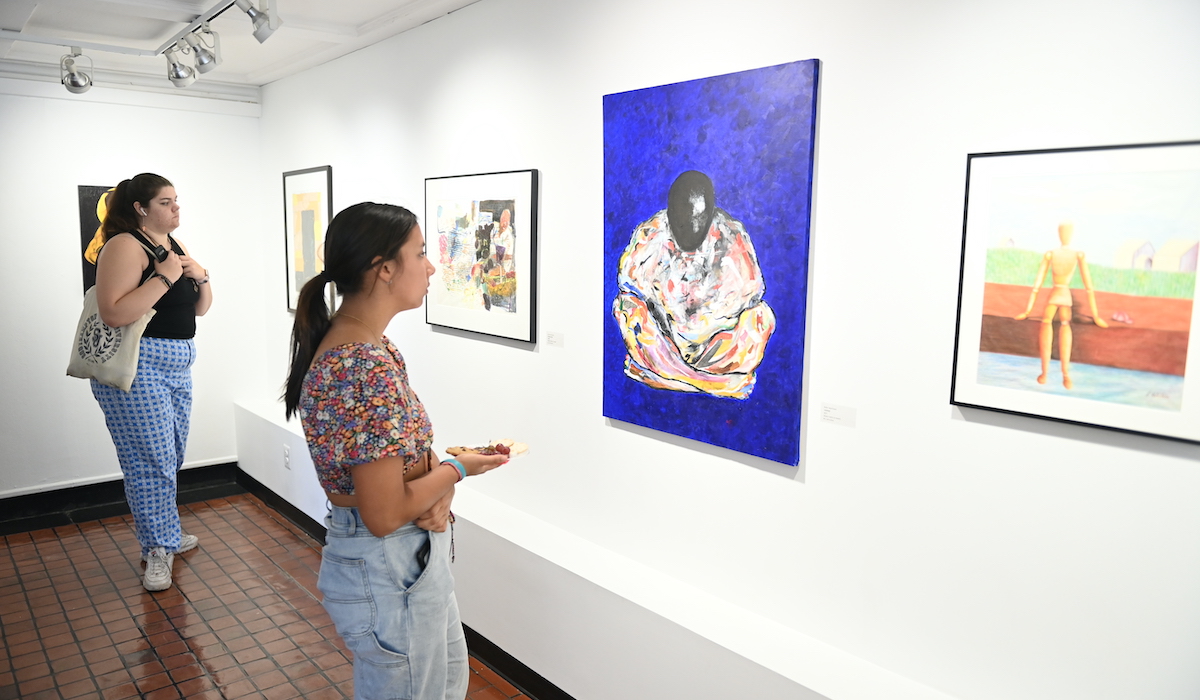

The art department opened an exhibition in Salve Regina Hall, called “Lorton: Paper and Lens” on Sept. 15. The exhibition features pieces produced through the Lorton Reformatory art programs, which were designed to help rehabilitate incarcerated people.
With photographs and drawings of inmates on family visitation days, playing cards, and even playing with animals, the exhibit shows the humanity of these people who committed to learning about how art and photography can be a learning tool as well as a method of healing amidst less fortunate circumstances.
“The images subvert our ideas about who an incarcerated individual is.” said Tiffany Hunt, art history lecturer and curator of the exhibit. “Those images really force you to see a deep level of humanity, tenderness, and compassion that I hope forces people to reconsider their ideas about who is incarcerated.”
Featuring two galleries dedicated to carceral art, or art created by incarcerated people, Paper and Lens examines four principles: human life and dignity, human rights, the Catholic commitment to vulnerable populations, and restorative justice.
“I had to be a little creative about it, because one of the things that I wanted to prioritize here was a true D.C. connection, meaning not to just think about criminal justice in the macro, but to move it into a discussion of the micro. For D.C. in particular, our legacy with Lorton is something that's just a stone's throw away,” said Hunt.
The Lorton Art Program is an award-winning non-profit organization founded in 1975, and it provides a creative outlet for incarcerated residents of the D.C. Department of Corrections. Led by Mia Choumenkovitch, the program facilitates education and training in the fine arts to thousands of people. Though the Lorton Reformatory has since been shut down, the program remains active in other facilities.
The forefront of the exhibition features a number of art pieces on paper from the 21st-century, including portraits, drawings of family and friends, surrealism pieces, and religious art.
The larger portion of the gallery is a collection of archival photographs from the 1980s. The pictures depict inmates living their daily lives. They were taught by a local photographer, Karen Ruckman, about the art of photography. The Lorton Photography Workshop helped D.C. Department of Corrections residents to learn about the educational and expressive importance of photography, up until 1988.
Hunt also explained that this exhibit was installed in cohesion with other programs at Catholic University. The Rome School of Music, Drama and Art recently put on “Twelve Angry Jurors,” a play about a jury deciding the fate of a man suspected for murder. Campus Ministry also recently reached out to prison communities and had the opportunity to visit a juvenile detention facility in Los Angeles.
Each of these events and programs supports the Catholic commitment to prison reform and criminal justice reform. Hunt says that Paper and Lens supports the Catholic approach to prison reform primarily through use of restorative justice.
“It's not just about how you do time, but what you are doing to fix the broken bonds in a community that you have ruptured. There is healing necessary for the person and the entire community around them.” said Hunt.
Lorton: Paper and Lens will be available for public viewing through December 2.